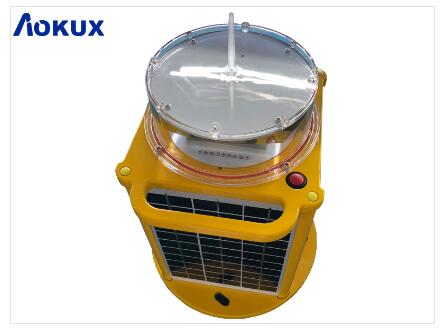
In recent years, the aviation industry has witnessed a growing emphasis on sustainable and environmentally friendly practices. As part of this shift, solar aircraft warning lights have emerged as a crucial technology that not only enhances aviation safety but also aligns with the industry's sustainability goals. These innovative lights provide essential visual signals for aircraft, ensuring safe navigation and compliance with regulatory requirements, while harnessing solar energy to minimize environmental impact. In this article, we will explore the significance of solar aircraft warning lights, their features, applications, and the overall impact on aviation safety and environmental sustainability.
Significance of Solar Aircraft Warning Lights
Solar aircraft warning lights serve as vital safety equipment for aviation infrastructure, including tall buildings, telecommunication towers, wind turbines, and other structures that pose potential hazards to low-flying aircraft. By providing a prominent visual signal, these lights alert pilots to the presence of obstacles, enabling them to navigate safely, especially during periods of low visibility or nighttime operations. The integration of solar technology eliminates the need for traditional grid-connected power sources, reducing operational costs and environmental footprint while ensuring continuous, reliable illumination.
Features and Components
Solar aircraft warning lights are equipped with a range of features designed to optimize performance and durability. These lights typically incorporate high-efficiency solar panels, rechargeable batteries, LED light sources, robust housing, and intelligent control systems. The solar panels capture sunlight and convert it into electrical energy, which is stored in the batteries for use during low-light conditions or at night. LED lights offer high visibility, long lifespan, and low power consumption, making them well-suited for aviation applications. Additionally, intelligent control systems enable automatic dusk-to-dawn operation, self-diagnostics, and remote monitoring, enhancing overall reliability and ease of maintenance.

Applications in Aviation
The applications of solar aircraft warning lights are diverse and encompass various aviation-related installations and structures. Tall buildings, especially those located near airports or along flight paths, rely on these lights to mitigate collision risks for approaching aircraft. Telecommunication and broadcast towers, which often extend to significant heights, utilize solar warning lights to comply with aviation safety regulations and ensure the safety of low-flying aircraft. Moreover, wind farms, an increasingly prevalent source of renewable energy, deploy these lights on turbine towers to enhance air traffic safety and regulatory compliance. In each of these applications, solar aircraft warning lights play a crucial role in safeguarding the skies and promoting sustainable aviation practices.
| 34 |
Solar Aircraft Warning Light |
| 33 | 30 |
| 32 | 29 |